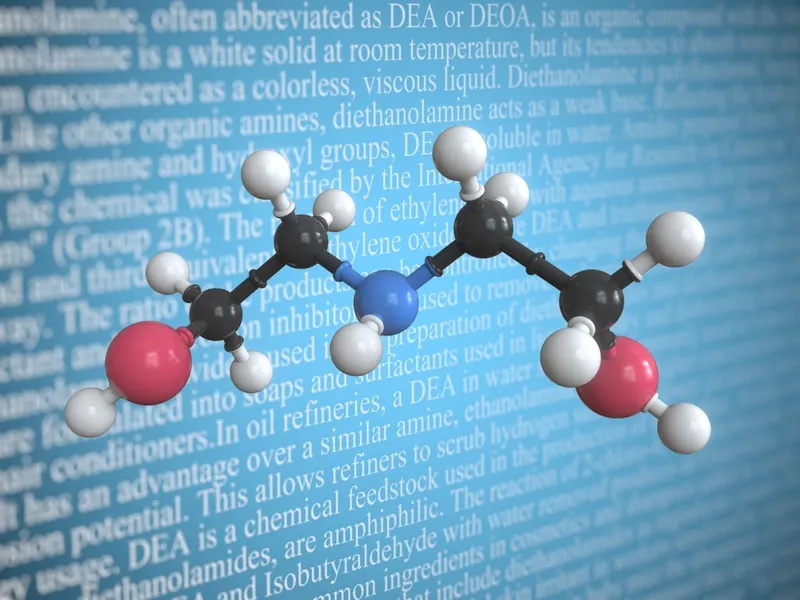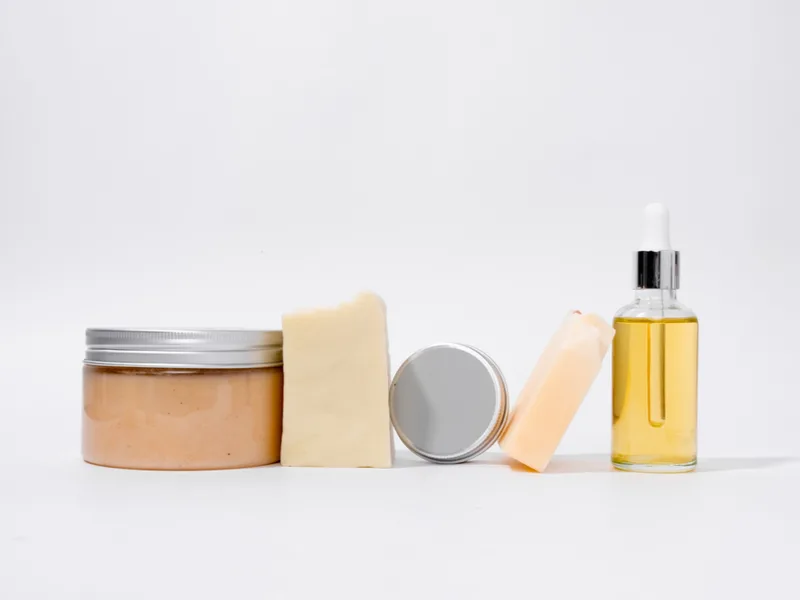Jump to:
People are paying a lot more attention to what ingredients are in their haircare and skincare products today. One ingredient that is getting some attention is DEA. You may wonder, “What is DEA in shampoo?” If this is you, read on to find out all you need to know.
What Is DEA in Shampoo?
DEA, or diethanolamine, is the ingredient that creates a rich lather in shampoos. It is an organic substance, and it can also adjust the pH of the shampoo. It is usually combined with other substances and converted into another ingredient.
In high doses, it is toxic and a potential carcinogen. However, they use low doses in shampoos. If you use shampoo with DEA, you may have more questions.
People often want to know the following:
- What is DEA?
- How is it added to shampoo?
- Is DEA dangerous to people?
- Are there alternative shampoos?
We had the same questions, and we searched for the answers. Continue reading to learn everything you need to know about DEA in shampoo.
What Is DEA?

max.ku/Shutterstock
DEA is diethanolamine, and it is an organic substance that makes shampoo lather. It is also used to adjust the pH of the shampoo. DEA is rarely used on its own, but when it is, it is used in small amounts.
Most of the time, it is combined with other substances and then converted into a new ingredient. The new ingredient is no longer chemically the same as DEA.
When they add it to shampoo, it helps to reduce surface tension so that water soluble and oil soluble ingredients can mix together and stay together. It is a surfactant, and there are different types of DEA. In shampoos, it is most common to find cocamide DEA or lauramide DEA.
Cocamide DEA is a surfactant that is made when they chemically alter the chemical composition of some fatty acids in coconut oil with diethanolamine. It produces a thick, amber colored liquid that can be used as a foaming agent.
Lauramide DEA is another ingredient that is sometimes used, and it is a surfactant, and it controls thickness and works as a foaming agent. Lauramide DEA is derived from lauric acid, and it can be used instead of cocamide DEA.
You Might Also Like:
- Which Shampoo Ingredients to Avoid
- Which Ingredients in Shampoo Cause Hair Loss
- What Is the Main Ingredient in Shampoo?
- What Is Member’s Mark Shampoo a Dupe For?
How Is DEA Added to Shampoo?
When manufacturers add DEA to shampoo, they combine it with another ingredient. It goes through a chemical reaction and becomes a new ingredient that is not chemically related to DEA. It is added to shampoos, cleansers, soaps, and more.
Cocamide DEA is made by using diethanolamine to chemically alter the chemical composition of certain fatty acids in coconut oil. This creates a thick liquid that is ember colored, and it is used to create the lather in your shampoo.
People often think that it is a natural ingredient because it is made with coconut fatty acids, but it is a chemical that goes through a reaction with the fatty acids from coconut. It makes the shampoo feel creamier and thicker when you put it on your hair.
Is DEA Dangerous to People?
In small doses, DEA can cause an allergic reaction that comes out as dermatitis. However, large doses can potentially cause cancer because it is considered a carcinogen. However, the FDA believes that there is no cause for concern.
In 1998, a study was done that found an association between DEA applied topically and cancer in lab animals. However, they did not establish a link between DEA and a risk of cancer for people.
DEA is banned in some places, including the EU. Many people recommend avoiding it because of the potential for a link to cancer. Since DEA isn’t added to shampoos by itself, look for the following ingredients:
- Cocamide DEA
- Cocamide MEA
- DEA-Cetyl Phosphate
- DEA Oleth-3 Phosphate
- Lauramide DEA
- Linoleamide MEA
- Myristamide DEA
- Oleamide DEA
- Stearamide MEA
- TEA-Lauryl Sulfate
- Triethanolamine
They are considered safe by the FDA, but people do have concerns because of the 1998 study. If you are trying to avoid DEA-based ingredients, you should know that they can be labeled organic.
This is true of cocamide DEA because it is derived from coconuts, which are natural. One thing to consider is that even if DEA doesn’t cause cancer, using it over an extended period of time can lead to damage to your scalp and your hair.
Alternatives and Shampoos Without DEA

Elina.Nova/Shutterstock
There are shampoos without DEA, but you will have to look to find them. They are all natural shampoos, and they are usually free of sulfates, parabens, and other irritants. These shampoos are often cruelty free, and they are often made by sustainable companies.
If you are concerned about the continuous exposure to potentially harmful ingredients, this is your best option. Natural shampoos are formulated with safe, organic ingredients, and they don’t contain any potentially harmful additives.
Read Next: How to Make Your Own Natural Shampoo
Frequently Asked Questions
Is DEA a carcinogen?
DEA is an IARC Group 2B carcinogen. In experiments with animals, researchers found sufficient evidence to consider the carcinogenicity of coconut oil diethanolamine.
What is DEA used for?
DEA is used in shampoos as a surfactant to make the shampoo foam into a thick substance that you can lather onto your head. It isn’t used on its own; it is combined with another substance to form cocamide DEA or lauramide DEA or some other substance.
Should people avoid DEA ingredients?
The FDA has approved this ingredient as safe for use, but some people avoid it anyway. If you are concerned about the potential exposure to carcinogens, you might consider avoiding products with this ingredient.
So, What Is DEA in Shampoo?
DEA in shampoo is an ingredient that is combined with another substance, such as the fatty acids in coconuts, to create a thick, creamy texture in shampoo. It is responsible for the lather when you massage shampoo into your scalp.
The FDA has approved it, but a study in 1998 found an association between DEA and cancer in lab animals. It is a carcinogen, so people often want to avoid it. They look for natural shampoos that are free of chemicals. And we suggest you do the same.
